83 F. high temperature at St. Cloud Wednesday.
83 F. average high on July 22.
86 F. high on July 22, 2014.
July 22, 1972:
A significant downpour occurs over a portion of Minnesota, with 10.84
inches of rain in 24 hours at Ft Ripley. 14 inches of rain fell at a
farm in Morrison County
Learning MachineThe
Internet is both empowering and disruptive, streamlining information,
but rendering layers of middle management unnecessary. The rate of
technological innovation is accelerating. Just keeping up is perilous,
bordering on impossible.
In computing people often say the
half-life of expertise is roughly 5 years. Meaning in 5 years HALF of
what you know is obsolete - so you better keep learning.
I'm
taking a cue from my oldest son (Walt) and learning new software, trying
to venture out of my comfort zone. It's like swimming upstream, but
it's essential for both companies and individuals.
If you think
you can get your high school or college degree and be "set for life" I
have an 8-track (and gently used fax machine) I'd like to sell you. Like it or not all
of us are perpetual learning machines now.
No red blobs are expected on Doppler today, but a few T-storms
Friday
may turn severe as a hot front approaches and the heat index nears the
100F mark by late afternoon, especially far southern Minnesota. Hey it's
been 4 days since my last power outage. I'm due. Between wild,
power-sapping wind storms and perpetual road construction it's a wonder
I'm semi-sane.
A
lake-worthy weekend is brewing with highs near 90F and sticky sun both
days. Compared to the rest of America sizzling away Minnesota will see a
mild dose of dog days this summer.
Friday Severe Threat.
NOAA SPC has a slight risk of severe storms Friday from Duluth and the
Twin Cities to Eau Claire and Waterloo. The leading edge of very hot,
70-degree-plus dew point air coupled with a sheared environment will
result in a squall line capable of large hail, straight-line winds, even
a few tornadoes. I expect watches and warnings closer to home on
Friday. 3 power outages in less than 12 days? Hey, let's go for a
record!
Partly Sweaty.
Friday looks like the most uncomfortable day with a shot at low 90s and
a swamp-like dew point in the 70s, making it feel like 100F by late
afternoon. Winds swing around to northwest Saturday and dew points will
come down to more tolerable levels over the weekend, a shot at 90F
Sunday and Monday before another spirited round of T-storms late Monday
as we get a midweek break from the stickies.
Trending Wetter.
NOAA model ensembles still soak much of Florida, and every new run
looks a litlte wetter from Des Moines to the Twin Cities, Fargo and
Bismarck. The best chance of 2-4" rains will come across Iowa, but some
local 1-2" amounts in heavy T-storms are possible across much of
Minnesota between Friday and next Tuesday.
GFS Guidance Next 10 Days.
The animation above, courtesy of NOAA, shows predicted rainfall and
surface pressure between Thursday and August 1. A ROF (Ring of Fire)
pattern will prevail for the Upper Midwest from Friday into early next
week, "ridge-rider" T-storms flaring up along the northern periphery of a
heat bubble. By Tuesday and Wednesday of next week a more formidable
shot of Canadian air cools us off.
NOAA: Hottest First Half of Year in Northern Hemisphere By Stunning .36F.
ThinkProgress
has an update on what will almost certainly wind up being the hottest
year on record, worldwide. Here's a snippet: "NOAA’s latest
monthly climate report
confirms that 2015 will crush previous global temperature records.
That’s especially true up here in the northern hemisphere, where the
first half of 2015 is a remarkable 0.36°F warmer than the first half of
any year since records started being kept 135 years ago..." (Image:
NOAA).
Europe to America: Your Love of Air Conditioning Is Stupid. Are we really one big, hot mess?
The Washington Post takes a look at our obsession with staying cool; here's a clip: "...
Overall,
it's safe to say that Europe thinks America's love of air-conditioning
is actually quite daft. Europeans have wondered about this
particular U.S. addiction for a while now: Back in 1992, Cambridge
University Prof. Gwyn Prins called America's love of air-conditioning
the country's "most pervasive and least-noticed epidemic," according to the Economist. And according to the Environmental Protection Agency,
it's getting worse: American demand for air-conditioning has only
increased over the past decades. The U.S. has been the world's leader in
air-conditioning ever since, and it's not a leadership Americans should
necessarily be proud of..."
El Nino Intensifying, Could Rival Strongest in Recorded History.
The current warming of the Pacific bears uncanny resemblance to
1997-98, which helped to spawn floods and mudslides for California
during the winter months. Here's an excerpt from a good update at
Capital Weather Gang: "...
The
sprawling area of warm waters has proven to be a boon for Pacific
tropical cyclone activity, near record levels through mid-summer.
Through a positive feedback mechanism, these cyclones have likely helped
to reinforce the westerly push of warm waters, Slate’s Eric Holthaus reported. The 2015 El Niño event is now neck-and-neck with record-setting event of 1997-1998 in terms of its mid-summer intensity..."
Image credit: Jan Null.
*
Bloomberg Business takes a look at the link between an intensifying El Nino and the flurry of hurricanes and typhoons in the Pacific.
What's The Likelihood of a Hurricane Hitting California?
Don't laugh too hard. It's a remote possibility yes, but the
probability is greater than zero, especially during an El Nino year when
Pacific water is unusually warm and storms can retain their strength
farther north. Here's an excerpt from
The Weather Channel: "...
And
while it's not all that uncommon for tropical moisture to make it to
California, many have been asking: could a hurricane make landfall on
the West Coast? History shows a hurricane landfall is possible, but if
it happened, it would be in Southern California. On Oct. 2, 1858, a
hurricane came ashore and caused widespread damage in San Diego.
That unnamed hurricane was the last, and only, example on record of a
hurricane coming ashore on the West Coast. In 1939, a tropical storm made landfall along the California coast at Long Beach, according to Weather Underground..."
Last Big Hurricane Scare for California: 1997's Hurricane Linda.
What's interesting is that the current El Nino is being compared to
1997-98, when trade winds subsided and El Nino-warmed water spread
unusually far north, providing a potential runway for Hurricane Linda to
run all the way up to California. It never happened, but we came close.
Here's an excerpt from my book, Restless Skies: "
On September 9,
1997 Hurricane Linda formed about 700 miles southwest of the Baja
peninsula. As the storm slowly moved north along the Mexican coastline,
El Nino's warm waters caused Linda to grow explosively into a large
howling hurricane, with sustained winds up to 185 mph, and gusts over
200 mph. Linda had become the most powerful East Pacific hurricane in
the history of weather records. As the storm swirled and strengthened,
growing even larger and deadlier, meteorologists were stunned as they
pored over the forecasts comong out of the computer models. The extreme
hurricane would most likely slam the coast somewhere between San Diego
and Los Angeles. El Nino had slowed the prevailing westerly winds,
allowing warm, 80-degree water to linger, thereby providing a fertile
breeding ground for a hurricane to churn north toward Southern
California. It was a perfect storm of warm water and raging winds. Los
Angeles seemed to be in Linda's crosshairs. At almost the last moment
and upper-level trough, a stormy wrinkle of cold, windy air aloft, moved
erratically, and Hurricane Linda veered out to sea...." (Image: NASA)
NASA Measures Southwestern U.S. Record Rainfall. Here's
more information from the GPM, NASA's Global Precipitation Measurement satellite: "
Moisture
pumping into southern California and the Desert Southwest from the
remnants of hurricane Delores has caused record July rainfall. Data from
the Global Precipitation Measurement (GPM) mission core observatory was
used to estimate the rainfall. Dolores formed over the weekend of July
11 and 12 about 175 miles (275 km) south-southwest of Manzanillo,
Mexico. The storm moved north-northwest and on July 17, moisture
associated with the storm began streaming to the northeast over Baja
California, mainland Mexico and southern Arizona. As the storm continued
moving to the north-northwest over the open waters of the Eastern
Pacific Ocean, that stream of moisture moved north over southern
California and Arizona..."
New NASA Video on Flood Prediction.
EarthSky has a link to the video - here's an excerpt: "
By
any metric — from financial ruin to the human toll — floods rank
alongside earthquakes, hurricanes, and tsunamis as the worst natural
disasters. In fact, the most deadly disaster of the 20th century was the
China floods of 1931, which may have resulted in more than a million
deaths. But predicting floods is notoriously difficult. Floods depend on
a complex mixture of rainfall, soil moisture, the recent history of
precipitation, and much more. Snowmelt and storm surges can also
contribute to unexpected flooding. Thanks to NASA, however, the
predictions are improving. The video above has more..."
Scientists Are Building A System That Could Turn Atmospheric CO2 Into Fuel.
This is the kind of innovation we're going to need - new technologies
we can't even imagine (today) that will help us solve this problem and
have the economic growth we need, but not at the expense of adding to
greenhouse gas pollution and climate volatility. Here's an excerpt from
ScienceAlert: "...
Scientists
in Canada are developing an industrial carbon dioxide recycling plant
that could one day suck CO2 out of the atmosphere and convert it into a
zero-carbon e-diesel fuel. Developed by tech start-up Carbon Engineering
and partly funded by Bill Gates, the system will essentially do the job
of trees, but in places unable to host them, such as icy plains and
deserts. Just like these new solar cells
that are designed to split water into a hydrogen fuel, the CO2
recycling plant will combine carbon dioxide with hydrogen split from
water to form hydrocarbon fuel..." (Image: Carbon Engineering).
Hackers Remotely Kill a Jeep On The Highway - With Me In It. Here's an excerpt of the experiment and
WIRED article that has caused such a stir: "...
All
of this is possible only because Chrysler, like practically all
carmakers, is doing its best to turn the modern automobile into a
smartphone. Uconnect, an Internet-connected computer feature in hundreds
of thousands of Fiat Chrysler cars, SUVs, and trucks, controls the
vehicle’s entertainment and navigation, enables phone calls, and even
offers a Wi-Fi hot spot. And thanks to one vulnerable element, which
Miller and Valasek won’t identify until their Black Hat talk, Uconnect’s
cellular connection also lets anyone who knows the car’s IP address
gain access from anywhere in the country. “From an attacker’s
perspective, it’s a super nice vulnerability,” Miller says..."
Summer Travel: How To Avoid Extreme Weather, Stay Safe on Vacations.
The most important thing you can do is load the right weather apps on
your smart phone, in my humble opinion. That, and to quote the Boy
Scouts, be prepared. Here's an excerpt from
msn.com: "
Have
a car charger for cell phones to ensure the ability to call for help if
needed. Smart phones also have access to applications that can give you
weather forecasts or help locate nearby hotels or other shelter if
needed. Brady also suggested the FRX2 American Red Cross radio,
which will carry weather warnings on the radio stations, has a built in
flashlight and can be hand-cranked to give it power or also charge a
cell phone..."

The Smartest Way To Take a Vacation.
The Wall Street Journal has some good advice; here's an excerpt: "...
Psychologists
and researchers have been studying how to create an ideal vacation that
boosts our well-being, relieves stress that can impact our health, and
helps us recharge for returning to work. Some conclusions: Longer
vacations aren’t necessarily better than shorter ones. Engage in
activities you haven’t done before, even if you’re at home on a
staycation. And end a trip on a high note..."

These Are The Top 20 Cities Americans Are Ditching. Hawaii?
Bloomberg Business
takes a look at which cities are seeing a net loss of residents; happy
to see no towns in Minnesota are on the list. Here's an excerpt: "
New
York City, Los Angeles, Honolulu: They're all places you would think
would be popular destinations for Americans. So it might come as a
surprise that these are among the cities U.S. residents are fleeing in
droves. The map below shows the 20 metropolitan areas that lost the
greatest share of local people to other parts of the country between
July 2013 and July 2014, according to a Bloomberg News analysis of U.S.
Census Bureau data..."

The Only Realistic Way To Fix Campaign Finance. Lawrence Lessig has an interesting Op-Ed at
The New York Times; here's an excerpt: "...
If
the core problem is politicians beholden to their funders, then giving
Congress the power to limit the amount spent or the amount contributed
would not resolve it. Regardless of how much was spent, the private
funding of public campaigns, even with limits, would inevitably
reproduce the world we have now. Real reform will require changing the
way campaigns are funded — moving from large-dollar private funding to
small-dollar public funding..." (Photo credit
here).

These Superhumans Are Real And Their DNA Could Be Worth Billions.
Bloomberg has a fascinating story - here's an excerpt: "
Steven
Pete can put his hand on a hot stove or step on a piece of glass and
not feel a thing, all because of a quirk in his genes. Only a few dozen
people in the world share Pete’s congenital insensitivity to pain. Drug
companies see riches in his rare mutation. They also have their eye on
people like Timothy Dreyer, 25, who has bones so dense he could walk
away from accidents that would leave others with broken limbs. About 100
people have sclerosteosis, Dreyer’s condition..."
Illustration credit: Stephanie Davidson.
Too Much TV Could Raise The Risk of Alzheimer's, Study Suggests. The Washington Post has more details; here's an excerpt: "...
Researchers
at the Northern California Institute for Research and Education in San
Francisco who investigated the association between sedentary lifestyles,
cognitive performance and the risk of developing dementia found that
people who watched a lot of television — namely, four hours or more per
day — scored significantly lower on measures of cognitive performance in
middle age..."

Terrafugia Unveils New Design for TF-X Autonomous Flying Car.
For many years now I've been lamenting the lack of flying cars. It's
2015. There should be flying cars! And along comes this post at
Gizmag to whet my appetite. Damn. Here's an excerpt: "...
Terrafugia
says the aim of its vehicles is to provide "true door-to-door
transportation." The TF-X is designed to seat up to four people and will
have computer-controlled flight that that will allow the operator to
simply input the desired destination before letting the vehicle take off
(from a level clearing of at least 100 ft in diameter) and fly itself.
To enable flight, the TF-X design has fold-out wings with twin electric
motor pods attached to the ends. The motors are powered by a 300 hp
engine and can move from vertical to horizontal positions as required
for taking off, cruising and landing..."
TODAY: Warm sun, a dry sky. Winds: South 10-15. High: 86
THURSDAY NIGHT: Clear evening, clouds increase late. Low: 70
FRIDAY: Sticky and hot with some murky sunshine, strong to severe T-storms possible. Feels like 95-100F by late afternoon. High: 91
SATURDAY: Hot sun, light winds. Dew point: 68. Wake-up: 73. Winds: NW 5-10. High: 88
SUNDAY: Hazy sunshine. Go jump in a lake. Wake-up: 72. High: near 90
MONDAY: Still steamy. Strong T-storms late? Wake-up: 74. High: 92
TUESDAY: Damp start. Becoming sunny, turning less humid. Wake-up: 71. High: 86
WEDNESDAY: Blue sky, comfortable. DP: 58. Wake-up: 66. High: 84
Climate Stories....
Heavy Summer Rain in Greenland Speeds Up Ice Melt. ScienceNordic has an interesting, and vaguely troubling story - here's an excerpt: "...
The
new study shows that these heavy rain events have occurred frequently
due to the warmer, wetter weather of the last 20 years, penetrating
deeper into the ice sheet, making it move and melt faster. “We saw 10 to
15 % of the total annual surface melt occur in this unusual week of
warm, wet weather in late summer 2011. When this water reached the bed,
the ice sheet lifted up and moved faster,” says Sam Doyle, from
Aberystwyth University, UK, lead author of the new study, which has just
been published in Nature Geoscience. According to his colleague and
co-author, professor Jason Box of the Geological Survey of Denmark and
Greenland, their results add more weight to scientists’ concerns of the
sensitivity of the entire Greenland Ice Sheet to melting..."
Photo credit above: "
Formation
of lakes on the Greenland Ice Sheet after the main melt-season due to
warm wet weather and heavy rain. Later this water drains to the bottom
of the ice sheet enabling it to move and melt faster. This makes the ice
sheet more vulnerable to such rapid melt events as the climate warms,
scientists say in a new study." (Photo: Sam Doyle).
Is Climate Policy Reaching a Turning Point? Vox has an interview with EPA Administrator Gina McCarthy; here's an excerpt: "...
Part
of the challenge is that we’re trying to do a couple of things here.
We’re trying to identify what further reductions are achievable by every
state. Because we want to make sure that every unit [i.e., coal or gas
plant] can actually achieve the reductions we’re intending to achieve.
So for some states, because of how far they’ve already moved with
renewables and efficiency programs, they’re far ahead of others, and
they have infrastructure in place that will allow them to continue this
downward trend. Whereas states that have not been engaged or do not have
that infrastructure will take a bit longer [to cut emissions]..."
The Climate Terminator: "Climate Changes Is Not Science Fiction" TIME has a story about Arnold Schwarzenegger's fight to raise climate awareness and climate action; here's an excerpt: "...
I’ve
starred in a lot of science fiction movies and, let me tell you
something, climate change is not science fiction, this is a battle in
the real world, it is impacting us right now,” Schwarzenegger said on
Tuesday at the first “summit of conscience for the climate.”
Schwarzenegger addressed an audience that included spiritual leaders
from many religions, as well as climate change experts. “I believe the
science is in. The debate is over and the time for action is now,”
Schwarzenegger continued..."
Photo credit above: "
This
photo provided by Paramount Pictures shows, Arnold Schwarzenegger as
the Terminator in "Terminator Genisys," from Paramount Pictures and
Skydance Productions." (Melinda Sue Gordon/Paramount Pictures via AP).
The 5 Telltale Techniques of Climate Change Denial. Here's an excerpt from a John Cook story at
CNN.com: "...
The link between conspiratorial thinking and science denial
has serious and practical consequences. Conspiracy theorists are immune
to scientific evidence, as any evidence conflicting with their beliefs
is considered part of a conspiracy. The implication is that the most
effective approach is not changing the mind of the unchangeable. Rather a
more fruitful approach is communicating the realities of climate change
to the large, undecided majority who are open to scientific evidence. A
crucial part of the puzzle is explaining the techniques of science
denial. This has the powerful effect of inoculating people against the misinformation of climate science deniers."
More Eyes on Climate Change. Computers can only do so much, according to a story at
Harvard Gazette; here's an excerpt: "...
The
creation of Margaret Kosmala, a postdoctoral fellow, Andrew Richardson,
an associate professor of organismic and evolutionary biology, and
colleagues at the National Ecological Observatory Network (NEON), Season
Spotter is a citizen-science project that aims to recruit Internet
users to assist researchers in analyzing images of natural scenes.
“We’re trying to get scientific data out of a set of images that we
can’t easily get with a computer,” Kosmala said. “We need to rely on
people’s eyes and brains to do the processing for us. We’re asking them
to answer simple questions about what they see in these images...”
Photo credit above: Season Spotter/PhenoCam. "
This
flowery field and image of Hawaii's Kamuela mountainside come from a
network of cameras tracking vegetation's response to climate change. The
project, called Season Spotter, appeals to the public for help by
recruiting Internet users to assist researchers in analyzing images of
natural scenes."
"
The absence of certainty is not an excuse to do nothing." - Christine Todd Whitman, President George W. Bush's Environmental Protection Agency (EPA) administrator.
"
There are too many special interests - and economic interests easily end up trumping the common good." - Pope Francis, Encyclical Letter
Laudato Si.
State of the Climate Report Released. Here are a few bullet points from a timely summary of the latest report, courtesy of the
AGU Blogosphere: "
Key highlights from the report include:
- Greenhouse gases continued to climb:
Major greenhouse gas concentrations, including carbon dioxide, methane
and nitrous oxide, continued to rise during 2014, once again reaching
historic high values. Atmospheric CO2 concentrations
increased by 1.9 ppm in 2014, reaching a global average of 397.2 ppm for
the year. This compares with a global average of 354.0 in 1990 when
this report was first published just 25 years ago.
- Record temperatures observed near the Earth’s surface:
Four independent global datasets showed that 2014 was the warmest year
on record. The warmth was widespread across land areas. Europe
experienced its warmest year on record, with more than 20 countries
exceeding their previous records. Africa had above-average temperatures
across most of the continent throughout 2014, Australia saw its third
warmest year on record, Mexico had its warmest year on record, and
Argentina and Uruguay each had their second warmest year on record.
Eastern North America was the only major region to experience
below-average annual temperatures..."
Image credit
above: "2014 was likely the hottest year on the instrument record and
one of the hottest over the last 1000 years at least. 2015 so far is
warmer."
Arctic Sea Ice Rebounds, But Not Recovering.
Climate Central
explains how a new satellite is helping scientists get a better
understanding of what's really happening at the top of the world; here's
a clip: "...
The 2010 launch of the European Space Agency’s CryoSat-2 satellite
finally allowed scientists to take a wide-scale view of Arctic sea ice
volume, and the first five years of data have yielded some surprises.
The volume of sea ice left at the end of the summer melt season
seems to vary more from year to year than had perhaps been previously
appreciated; after declining for several years, sea ice volume shot up
after the unusually cool summer of 2013, the data revealed. The authors
of a new study reviewing the volume data, detailed on Monday in the journal Nature Geoscience,
are quick to caution, though, that one single year of rebound doesn’t
suggest any sea ice recovery, as the overall trend is still downward..."
Image credit above: "
Arctic sea ice thickness in autumn as measured by CryoSat-2 between 2010 and 2014." Credit: CPOM.
Innovation To Stanch Climate Change Sputters.
Availability of relatively cheap, accessible domestic oil and natural
gas is slowing the adoption rate of renewables, argues the author of a
story at The New York Times; here's an excerpt: "...Perhaps
most critically, the world’s collective effort to reshape energy
infrastructure seems to be losing steam. In 2014, global investments in
renewable energy declined for the fourth year in a row, to under $250
billion. The United States, the most technologically proficient nation
on earth, could be expected to take the lead in developing new energy
alternatives. It isn’t. Awash in cheap energy from shale oil and gas — the product of a surge in federally funded research decades ago — America has lost sight of the goal: decarbonizing the world’s energy supply within a matter of decades..."

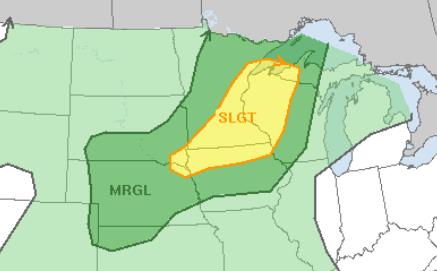
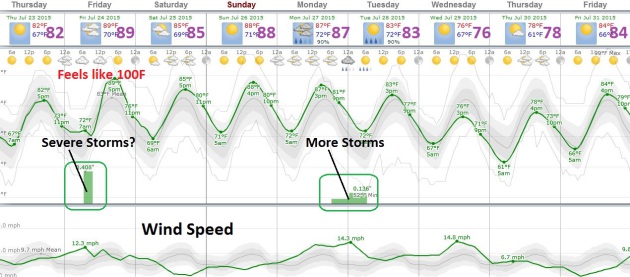
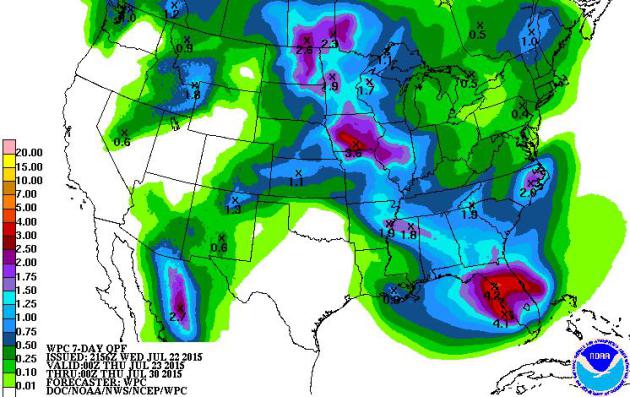

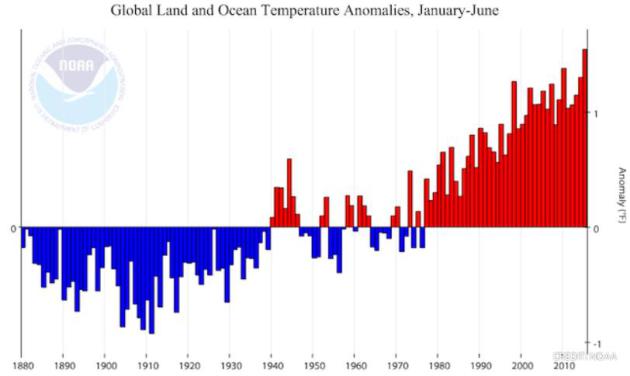

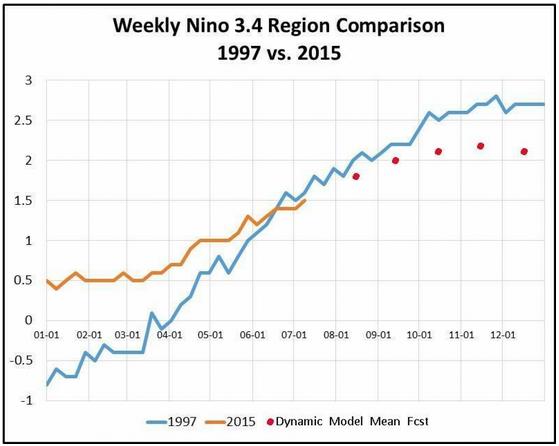
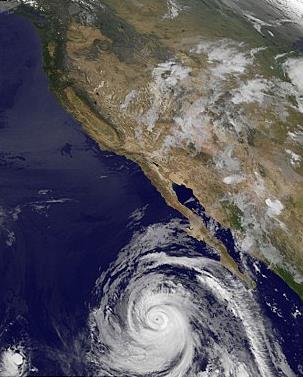
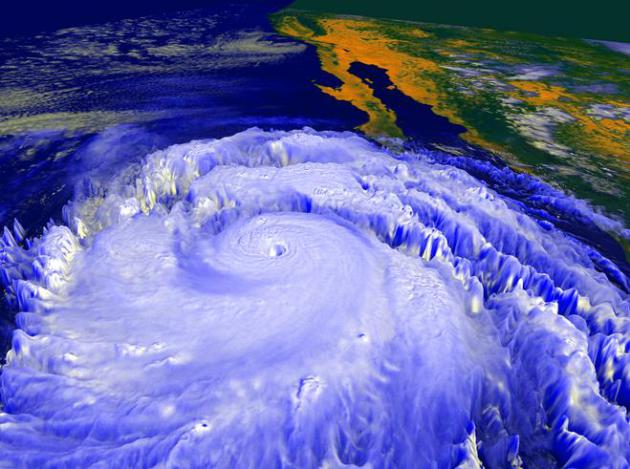
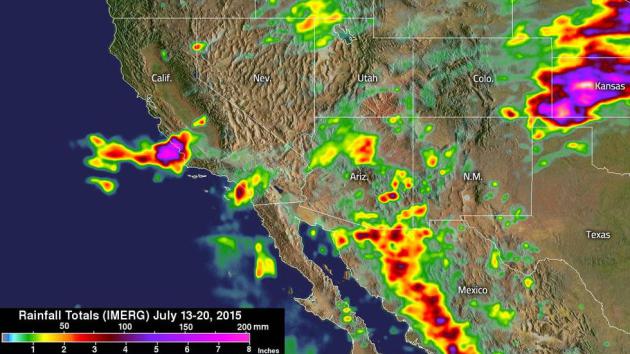

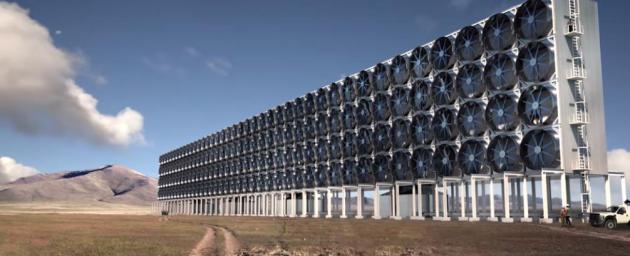



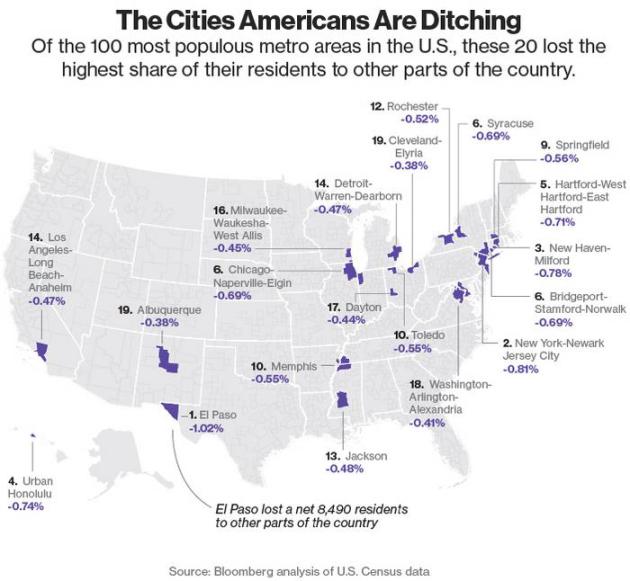



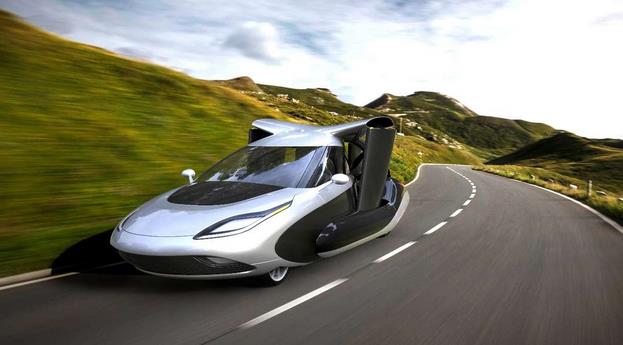

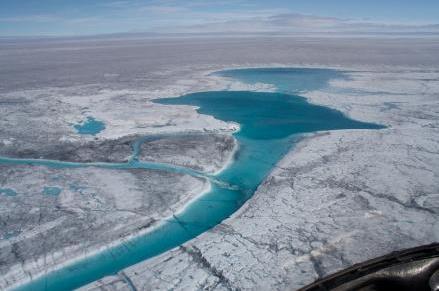
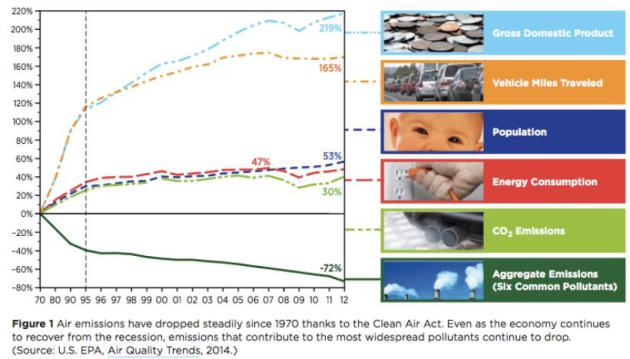



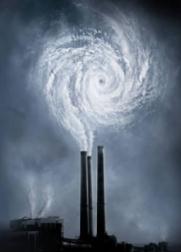
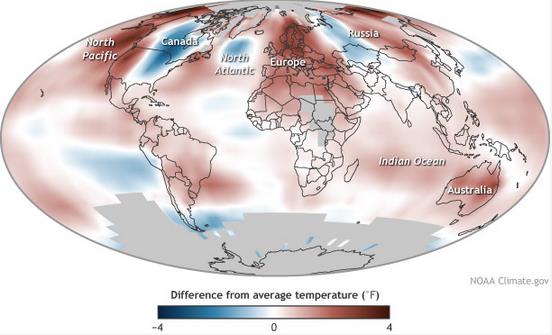


No comments:
Post a Comment